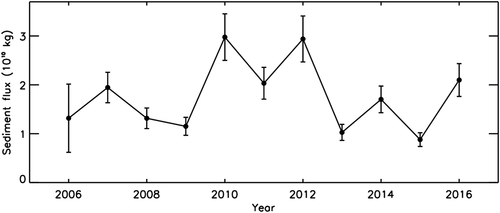Figures & data
Figure 1. (A) GrIS catchment after Lindbäck et al. (Citation2015); (B) proglacial area; and (C) Watson River and the fjord Kangerlussuaq
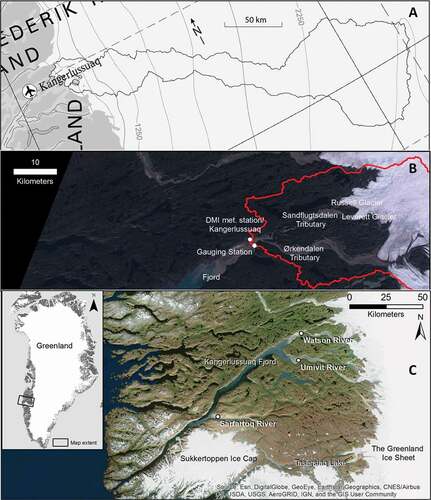
Figure 2. Gaging station at bridge crossing during low runoff (April 19, 2016) and high runoff (July 25, 2016)
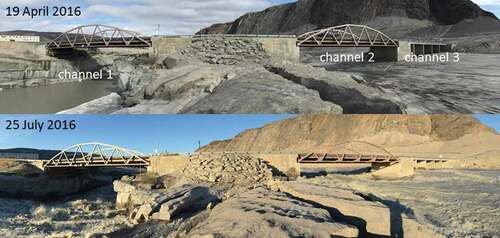
Figure 3. Seasonal variations of discharge. Years 2007, 2010, 2012, and 2013 are shown specifically. Peaks in August–September are jökulhlaup events (e.g., 2007)
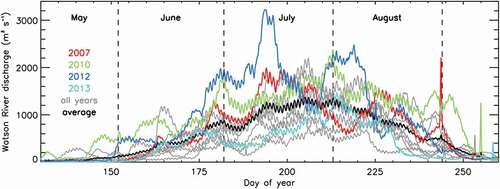
Table 1. Modeled transport characteristics of sediment and solutes in Watson River
Figure 4. (A) Sampled sediment concentration plotted against river discharge. The red line represents the best exponential fit; dashed lines give the root mean square difference. (B) Sediment concentration versus OBS sensor readings. The red line is the fit following Hasholt et al. (Citation2013). (C) Sediment concentration versus Solitech sensor readings. The red line is the fit following Hasholt et al. (Citation2013)
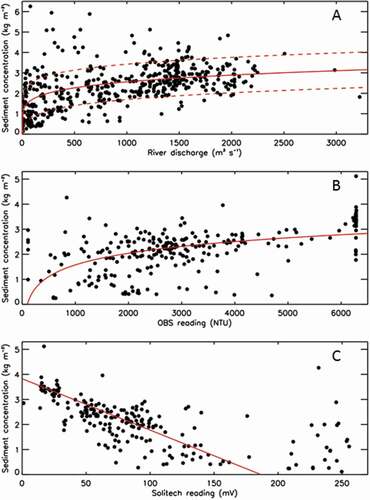
Table 2. Characteristics of sediments and solutes in Watson River, 2006–2016. Solute concentrations are shown as annual-mean ion concentrations based on the discharge-weighted method
Table 3. Sediment annual mass balance estimates for the Watson River catchment, 2009–2012
Table 4. Past, present, and future estimates of ion fluxes (× 103 t yr−1) from the GrIS based on upscaling from the Watson River catchment. The mean GrIS runoff fluxes are derived from Lenaerts et al. (Citation2015). Two climate scenarios are used for estimating future ion fluxes. The RCP2.6 scenario has a modest increase in atmospheric temperature over Greenland until 2100 (c. 2 K), followed by a slow decrease. The RCP8.5/4xCO2 scenario has a strong increase in atmospheric temperature over Greenland (c. 5 K in 2100)

